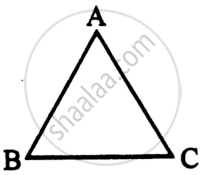Advertisements
Advertisements
Question
Radiation of frequency 1015 Hz is incident on two photosensitive surface P and Q. There is no photoemission from surface P. Photoemission occurs from surface Q but photoelectrons have zero kinetic energy. Explain these observations and find the value of work function for surface Q.
Solution
(a) Intensity of radiation is proportional to the number of energy quanta per unit area per unit time. The greater the number of energy quanta available, the greater is the number of electrons absorbing the energy quanta and greater, therefore, is the number of electrons coming out of the metal (for ν > ν0). This explains why, for ν > ν0, photoelectric current is proportional to intensity.
(b) The basic elementary process involved in photoelectric effect is the absorption of a light quantum by an electron. This process is instantaneous. Thus, whatever may be the intensity i.e., the number of quanta of radiation per unit area per unit time, photoelectric emission is instantaneous. Low intensity does not mean delay in emission, since the basic elementary process is the same. Intensity only determines how many electrons are able to participate in the elementary process (absorption of a light quantum by a single electron) and, therefore, the photoelectric current.
(ii) λ of radiation `= c/f=(3×10^8)/10^15=300 nm`
Energy of radiation`=(hc)/λ=1240/λ=1240/300=4.133 eV`
Work function of P is greater than 4.133 eV, therefore there is no photoemission from surface P.
For Q, KEmax= E - ϕo, as KE of photo electrons is zero, energy provided is equal to work function.
∴ Work function of Q = 4.133 eV
APPEARS IN
RELATED QUESTIONS
State two important properties of photon which are used to write Einstein’s photoelectric equation.
Einstein's photoelectric equation is:
a) `E_"max" = hlambda - varphi_0`
b) `E_"max"= (hc)/lambda varphi_0`
c) `E_"max" = hv + varphi_0`
d) `E_"max" = (hv)/lambda + varphi_0`
According to Einstein’s model minimum energy needed for the electron to escape from a metal surface having work function ϕ0, the electron is emitted with maximum kinetic energy, Kmax = ______.
According to Einstein's photoelectric equation, the plot of the kinetic energy of the emitted photoelectrons from a metal Vs the frequency of the incident radiation gives as straight the whose slope:
Einstein work on the photoelectric effect provided support for the eqn:-
The emission of electron is possible
The moment of a photon is given by
(i) A ray of light incident on face AB of an equilateral glass prism, shows minimum deviation of 30°. Calculate the speed of light through the prism.

(ii) Find the angle of incidence at face AB so that the emergent ray grazes along the face AC.
Ultraviolet light is incident on metals P, Q and R, having work functions 8 eV, 2 eV and 4 eV respectively,
- Which metal has lowest threshold frequency for photoelectric effect?
- For which metal is the value of Emax minimum?
(Note: Emax is maximum kinetic energy of the emitted photoelectrons.)
How does stopping potential in photoelectric emission vary if the frequency of incident radiation decreases?
